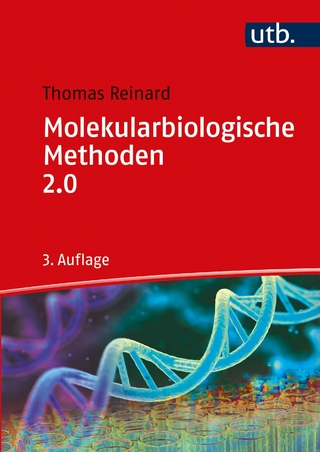
Singularities
Landmarks on the Pathways of Life
Seiten
2005
Cambridge University Press (Verlag)
978-0-521-84195-5 (ISBN)
Cambridge University Press (Verlag)
978-0-521-84195-5 (ISBN)
In this new book Christian De Duve, Nobel Laureate and pioneer of modern cell biology, presents a contemporary response to Erwin Schrodinger's classic What is Life? providing a sophisticated consideration of the key steps or bottlenecks that constrain the origins and evolution of life.
Erwin Schrödinger's What is Life? published 60 years ago, influenced much of the development of molecular biology. In this new book Christian De Duve, Nobel Laureate and pioneer of modern cell biology, presents a contemporary response to this classic, providing a sophisticated consideration of the key steps or bottlenecks that constrain the origins and evolution of life. De Duve surveys the entire history of life, including insights into the conditions that may have led to its emergence. He uses as landmarks the many remarkable singularities along the way, such as the single ancestry of all living beings, the universal genetic code, and the monophyletic origin of eukaryotes. The book offers a brief guided tour of biochemistry and phylogeny, from the basic molecular building blocks to the origin of humans. Each successive singularity is introduced in a sequence paralleling the hypothetical development of features and conditions on the primitive earth, explaining how and why each transition to greater complexity occurred.
Erwin Schrödinger's What is Life? published 60 years ago, influenced much of the development of molecular biology. In this new book Christian De Duve, Nobel Laureate and pioneer of modern cell biology, presents a contemporary response to this classic, providing a sophisticated consideration of the key steps or bottlenecks that constrain the origins and evolution of life. De Duve surveys the entire history of life, including insights into the conditions that may have led to its emergence. He uses as landmarks the many remarkable singularities along the way, such as the single ancestry of all living beings, the universal genetic code, and the monophyletic origin of eukaryotes. The book offers a brief guided tour of biochemistry and phylogeny, from the basic molecular building blocks to the origin of humans. Each successive singularity is introduced in a sequence paralleling the hypothetical development of features and conditions on the primitive earth, explaining how and why each transition to greater complexity occurred.
1. Building blocks; 2. Homochirality; 3. Protometabolism; 4. ATP; 5. Electrons and protons; 6. Thioesters; 7. RNA; 8. Proteins; 9. DNA; 10. Membranes; 11. Protonmotive force; 12. Protometabolism revisited; 13. The LUCA; 14. The first fork; 15. Eukaryotes; 16. Oxygen; 17. Endosymbionts; 18. Multicellular organisms; 19. Homo; 20. Evolution revisited.
| Erscheint lt. Verlag | 24.10.2005 |
|---|---|
| Zusatzinfo | 15 Halftones, unspecified |
| Verlagsort | Cambridge |
| Sprache | englisch |
| Maße | 158 x 237 mm |
| Gewicht | 576 g |
| Themenwelt | Naturwissenschaften ► Biologie ► Genetik / Molekularbiologie |
| Naturwissenschaften ► Biologie ► Zellbiologie | |
| ISBN-10 | 0-521-84195-X / 052184195X |
| ISBN-13 | 978-0-521-84195-5 / 9780521841955 |
| Zustand | Neuware |
| Haben Sie eine Frage zum Produkt? |
Mehr entdecken
aus dem Bereich
aus dem Bereich
50 Meilensteine der Genetik
Buch | Hardcover (2022)
Librero b.v. (Verlag)
9,95 €


